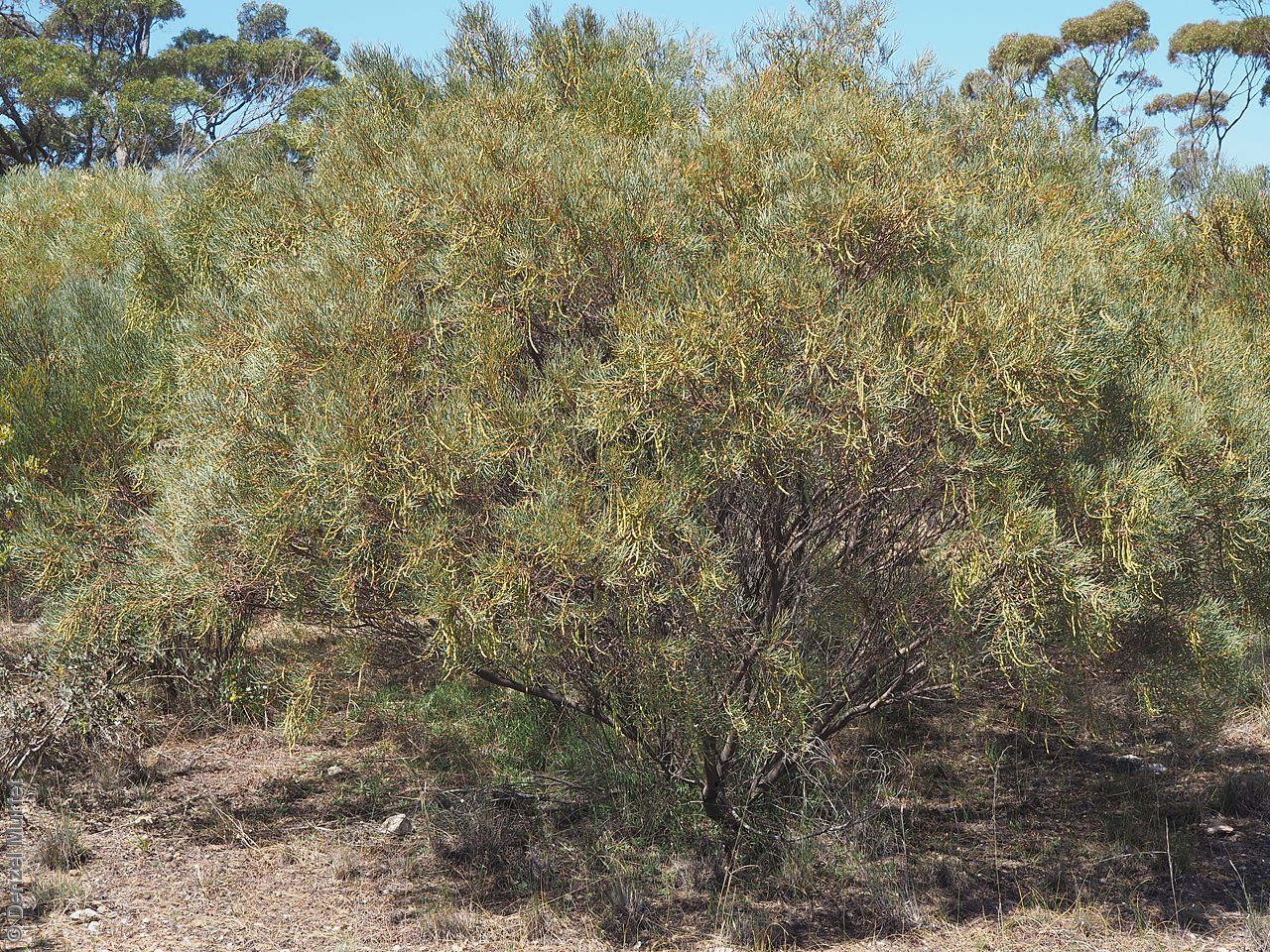
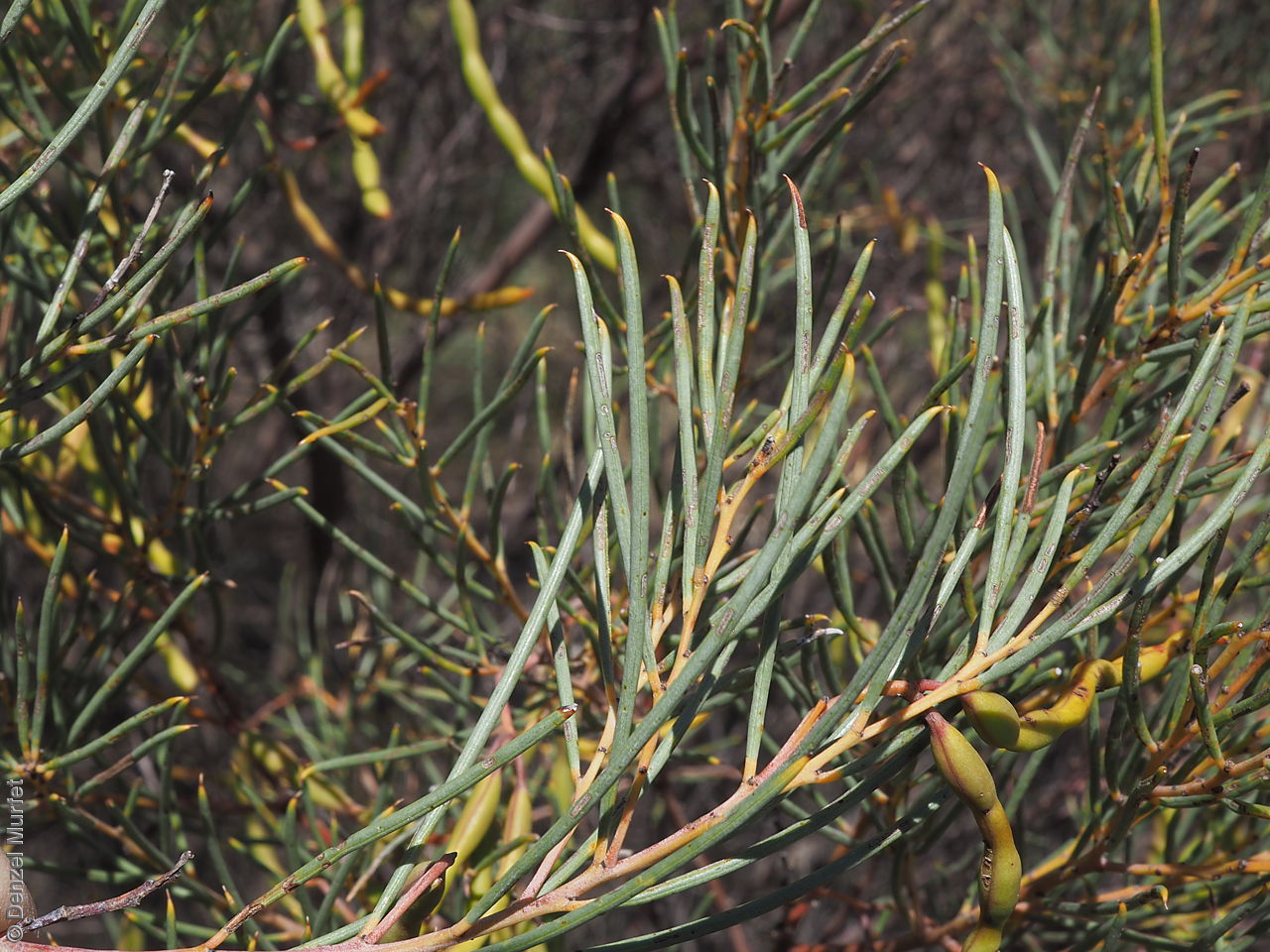
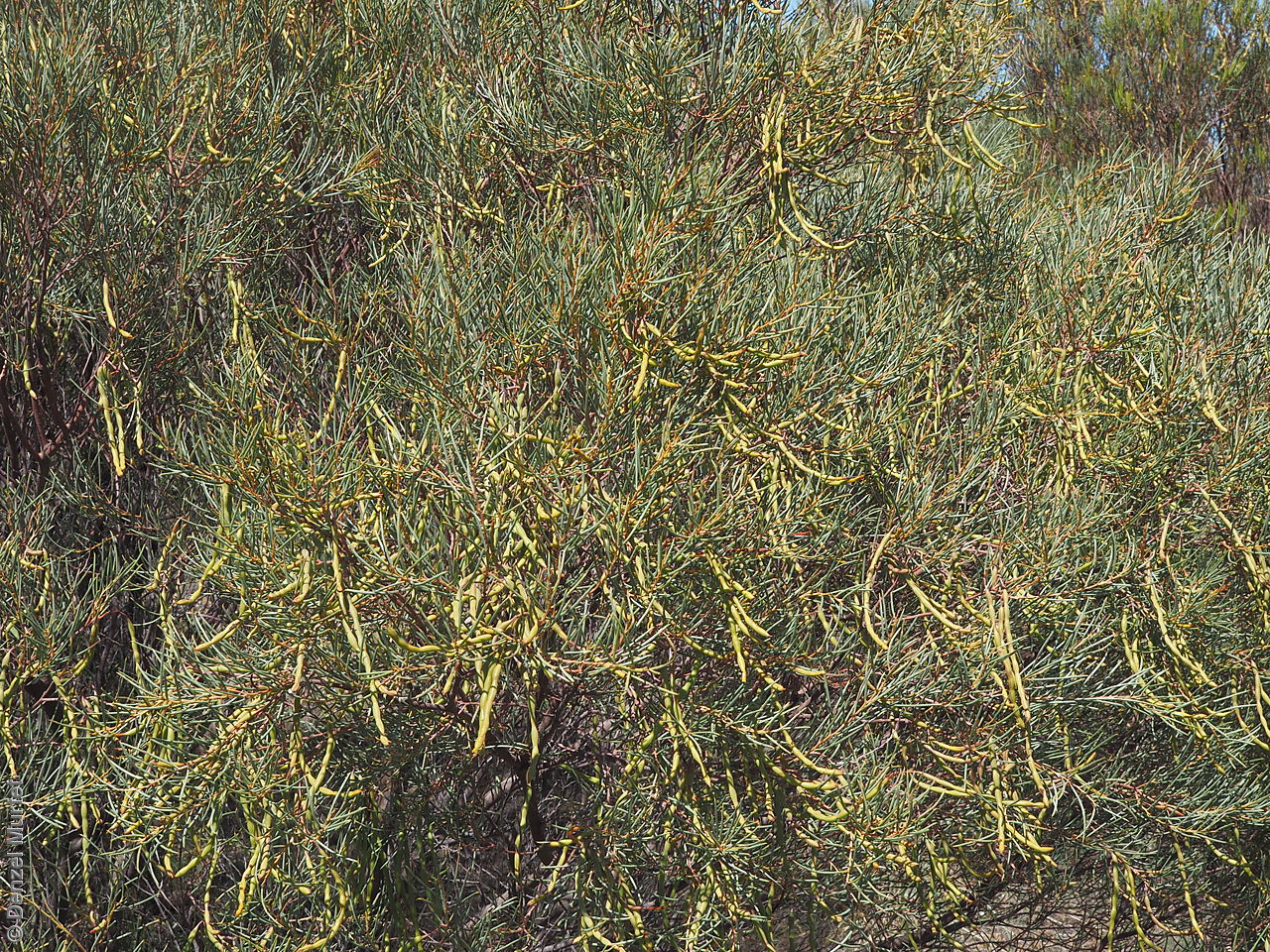
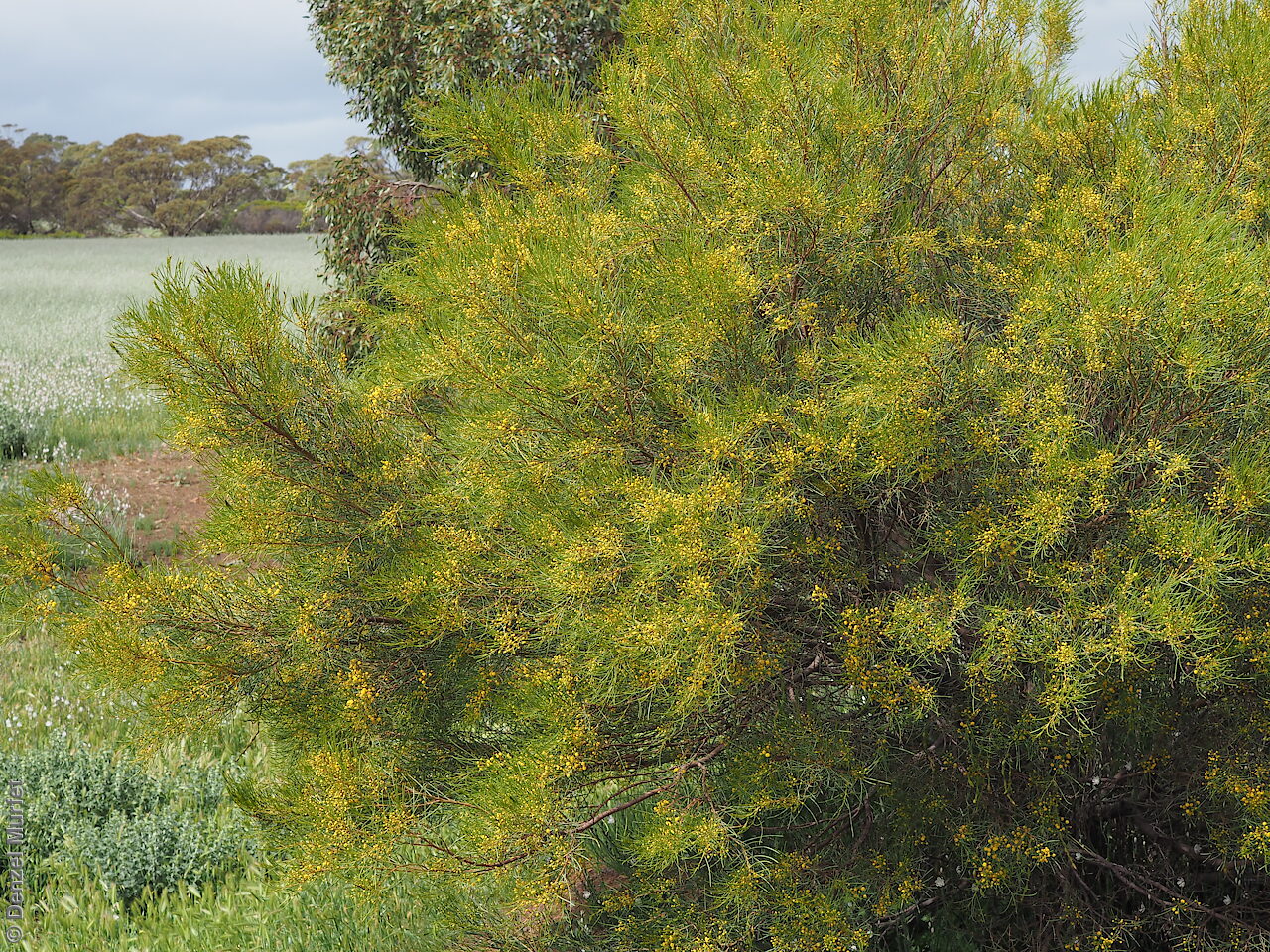
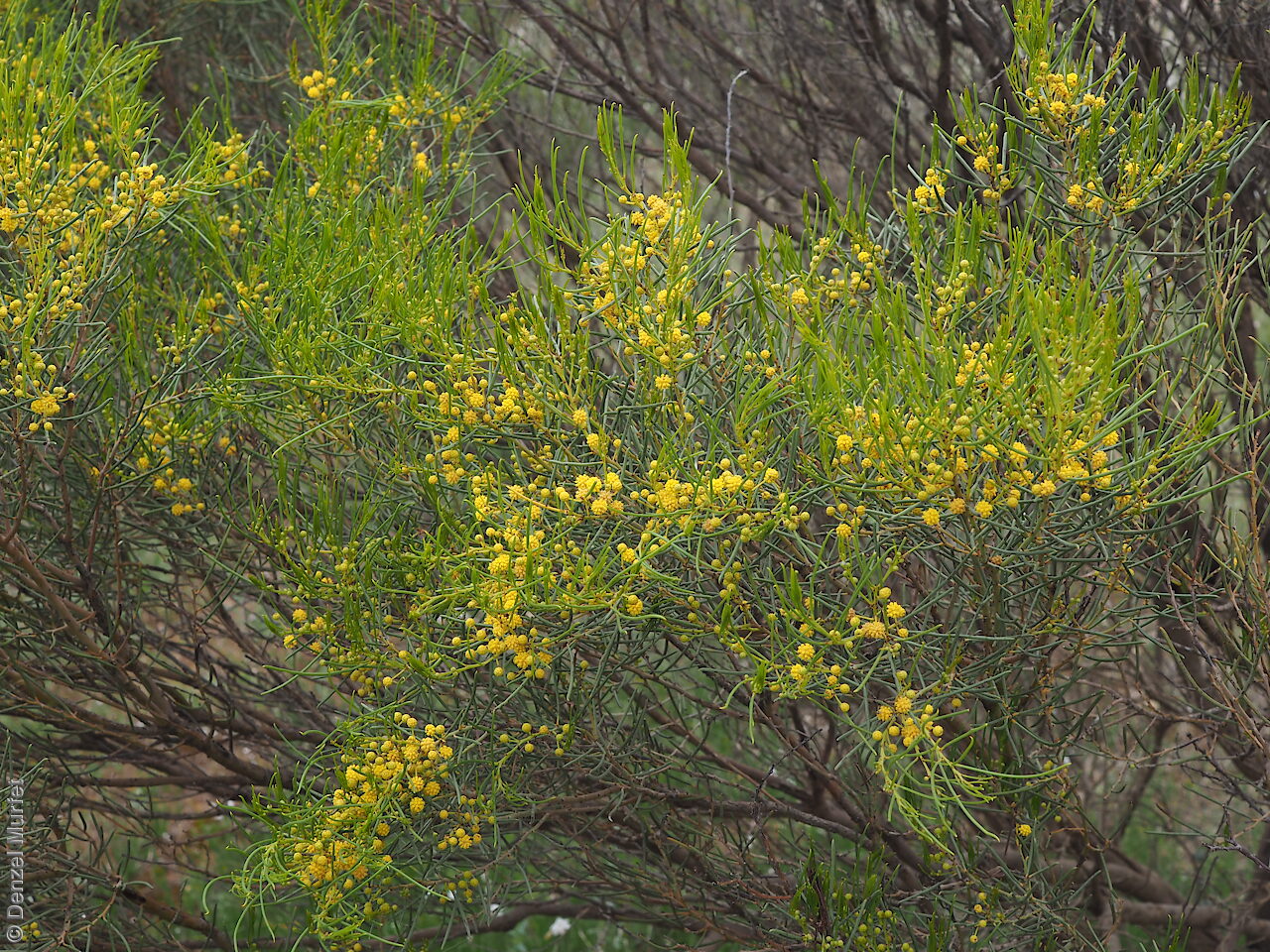
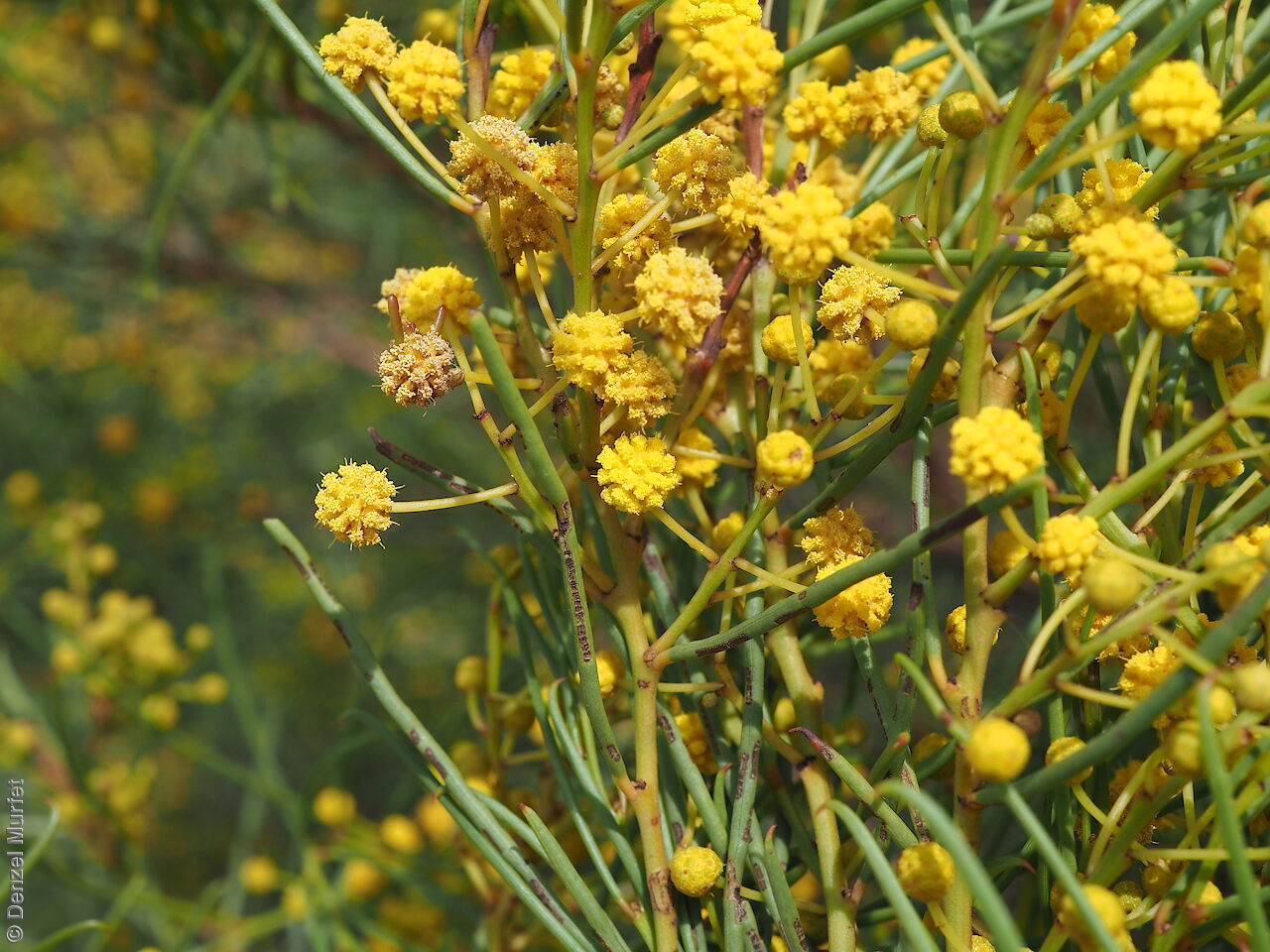
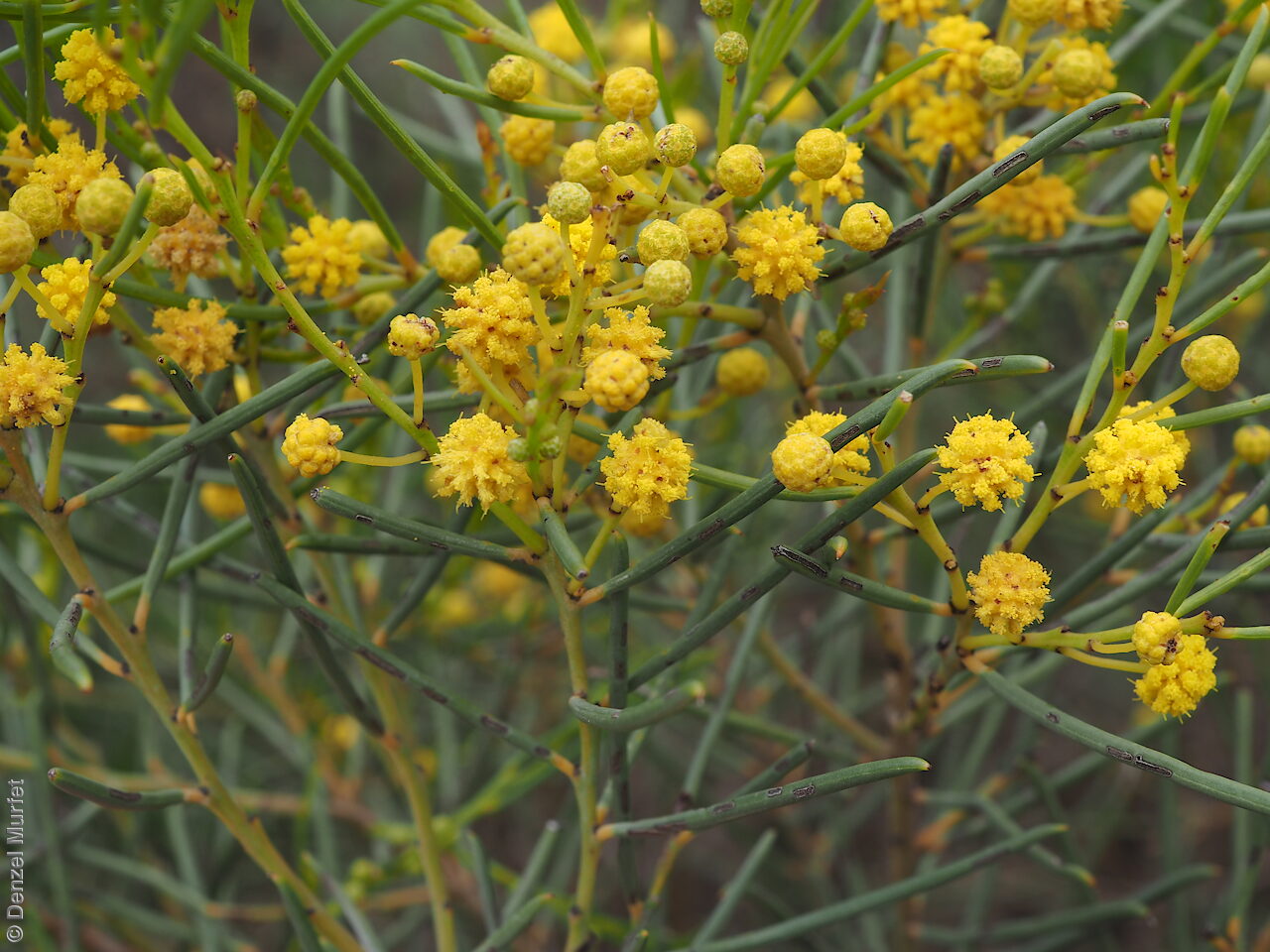
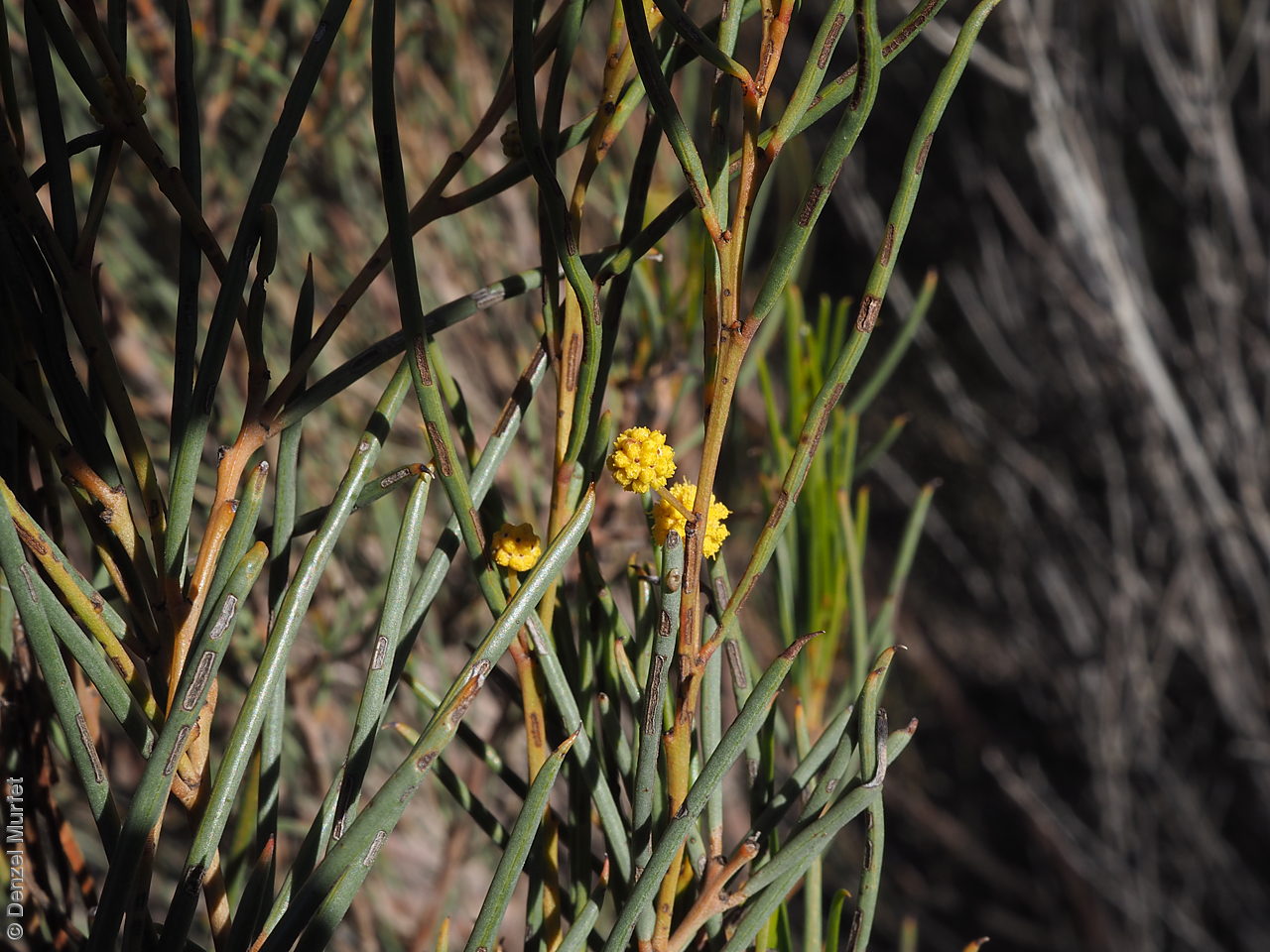
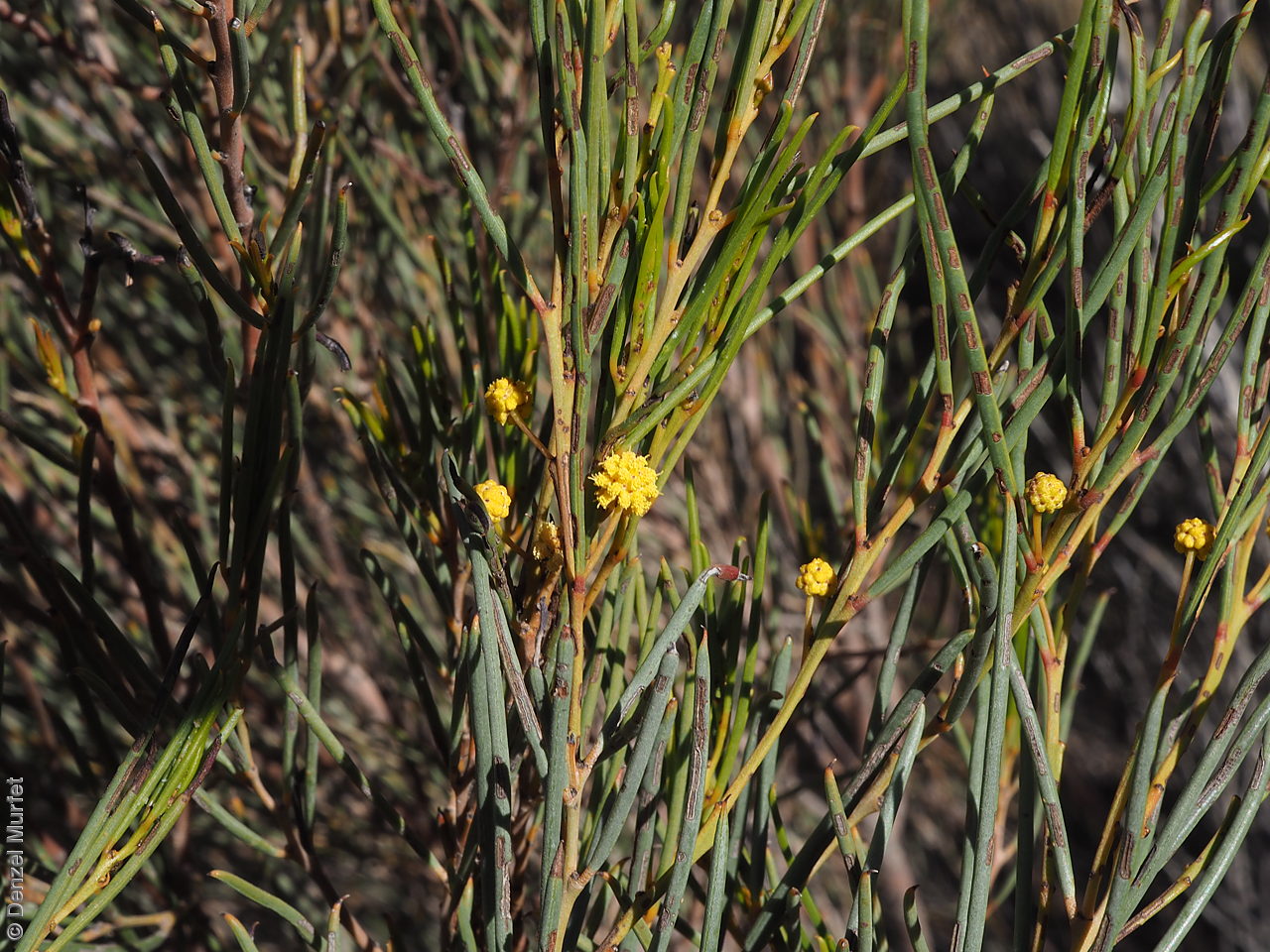
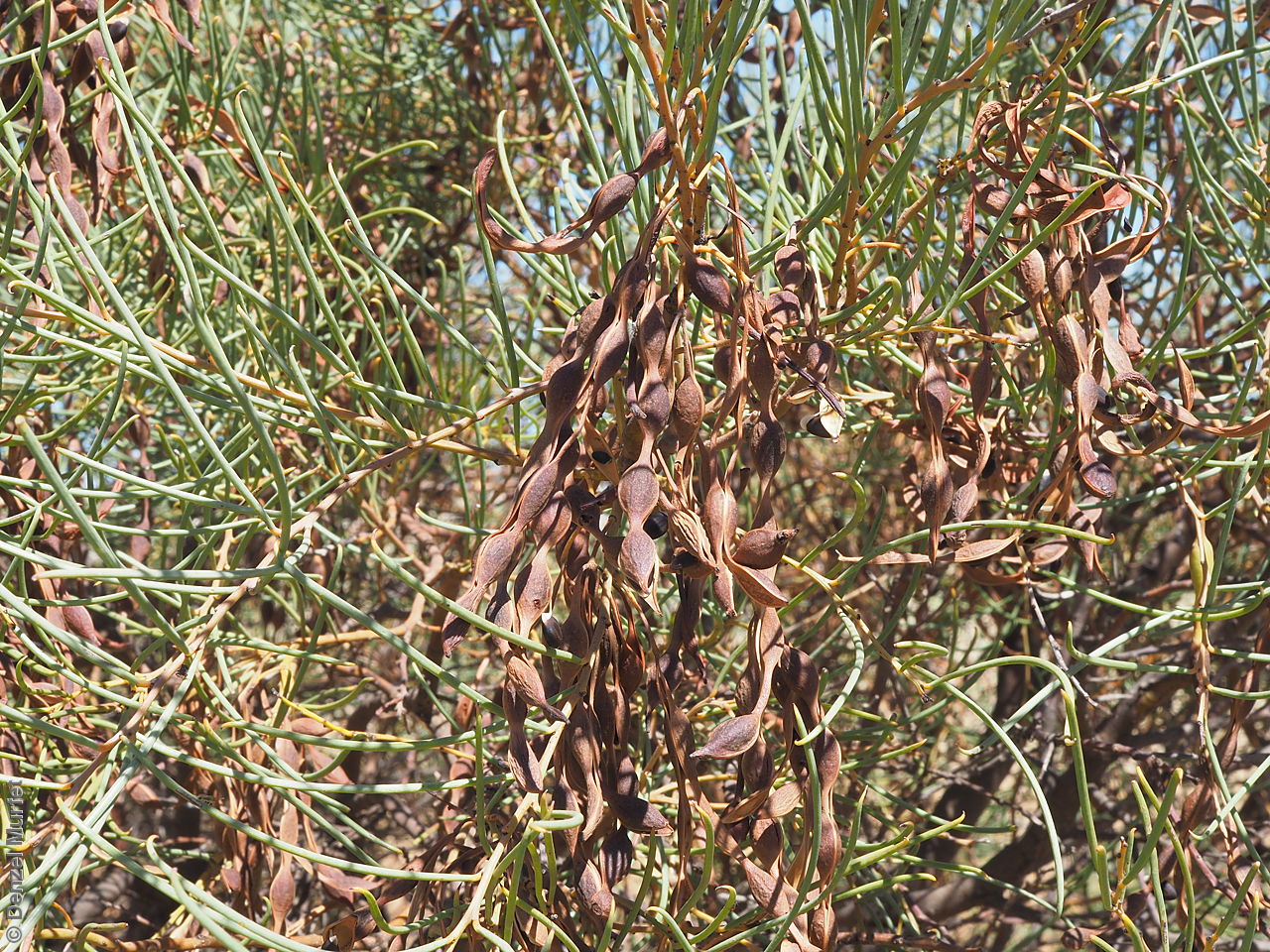
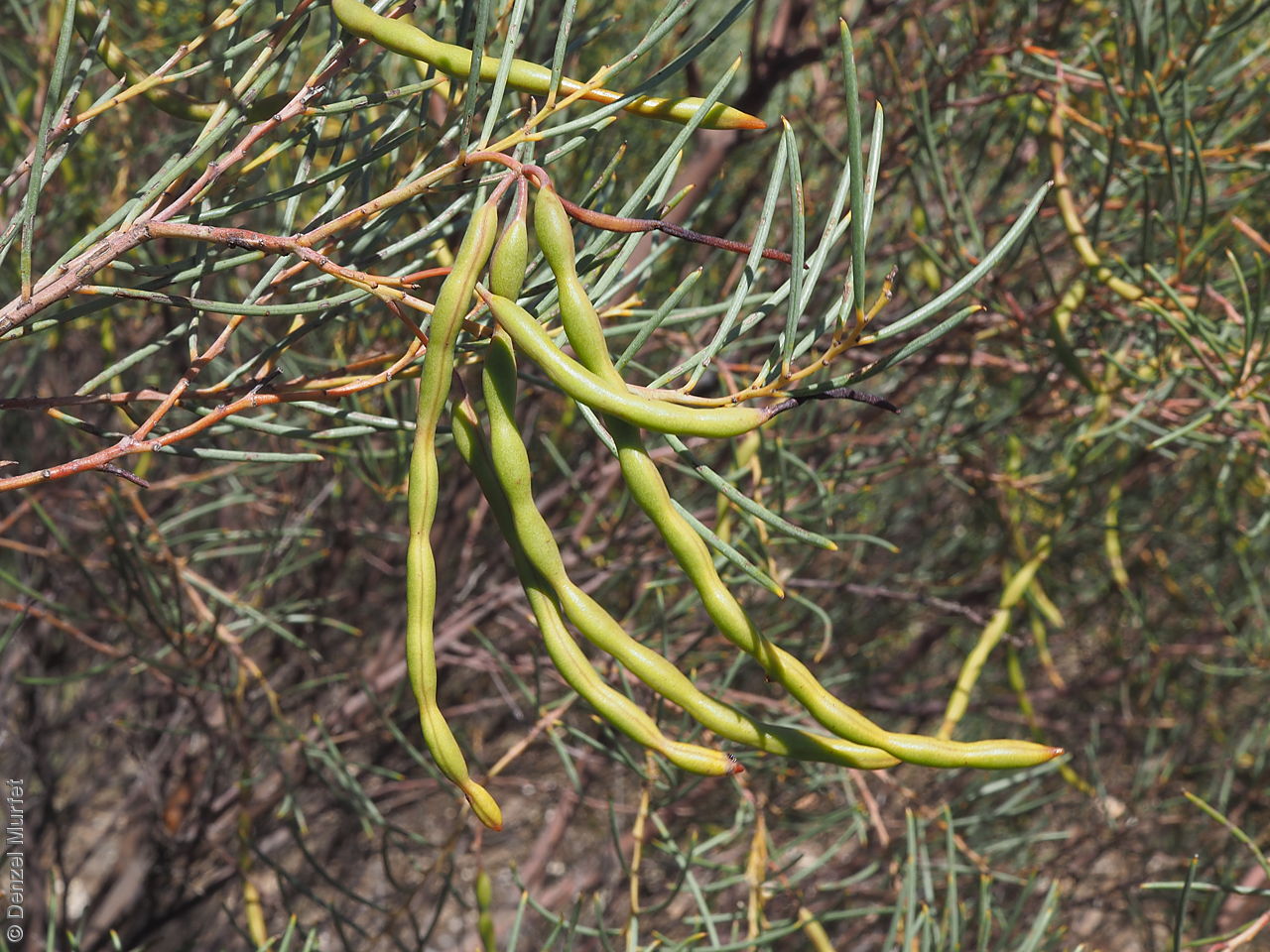
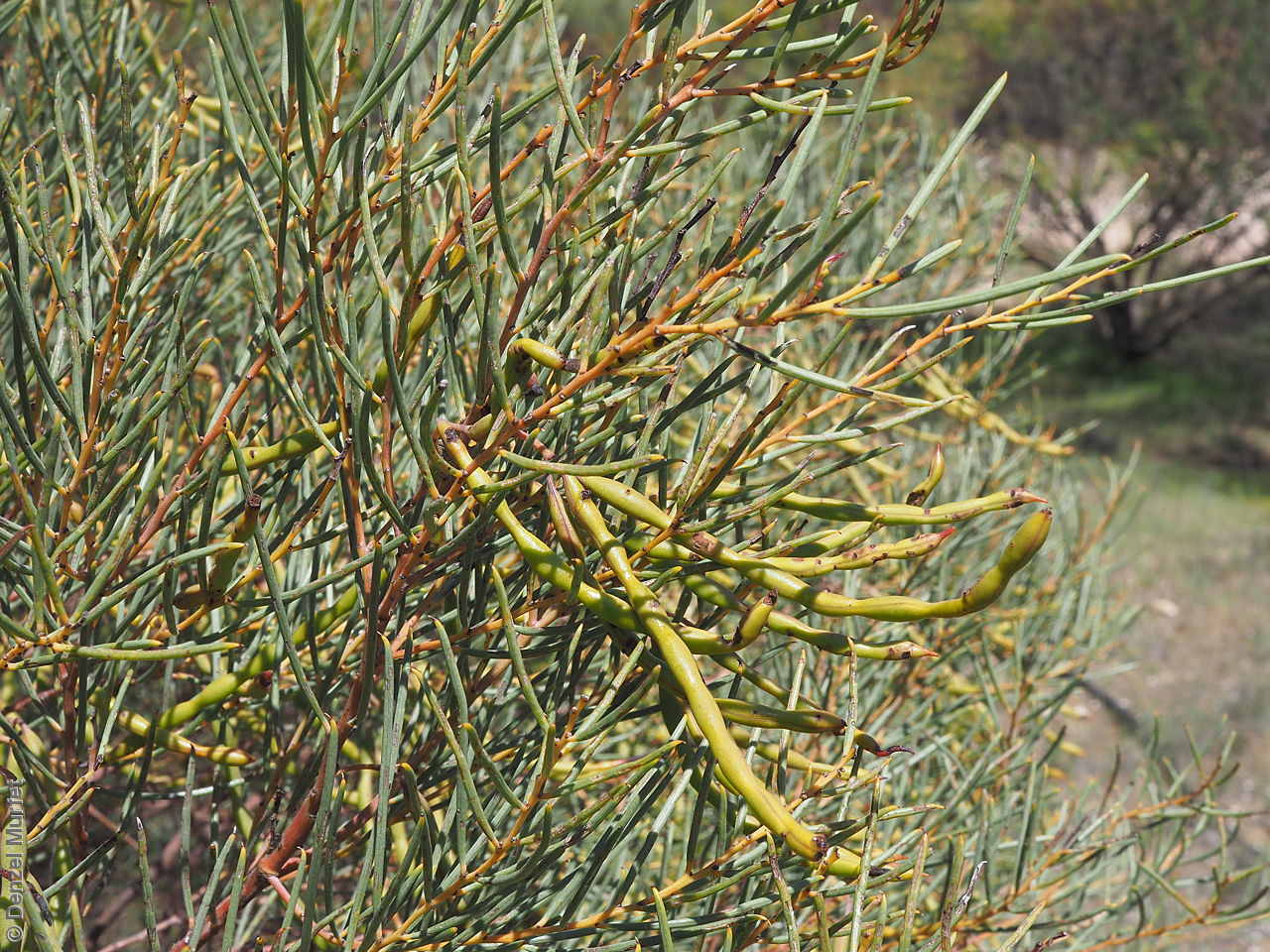
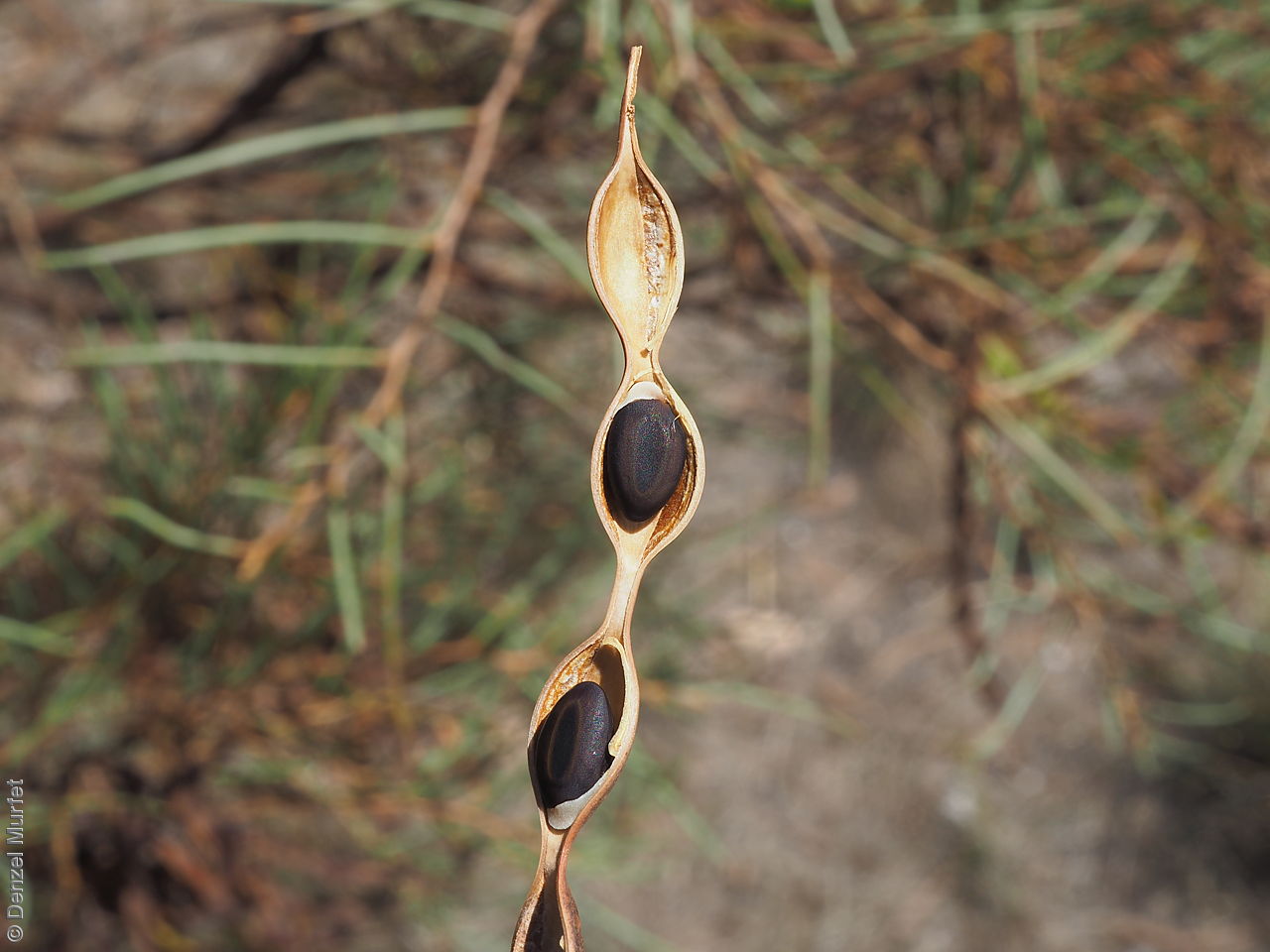
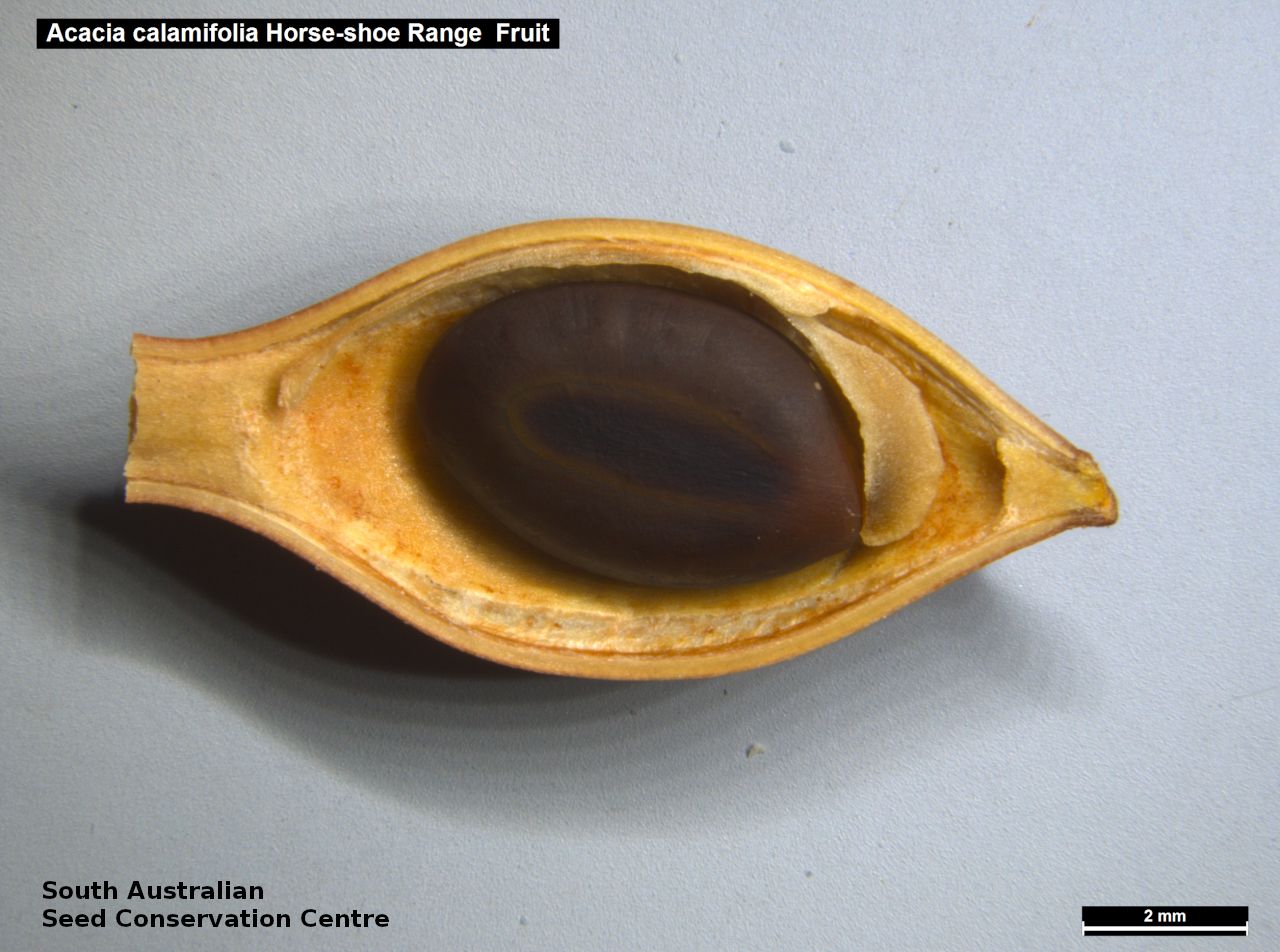
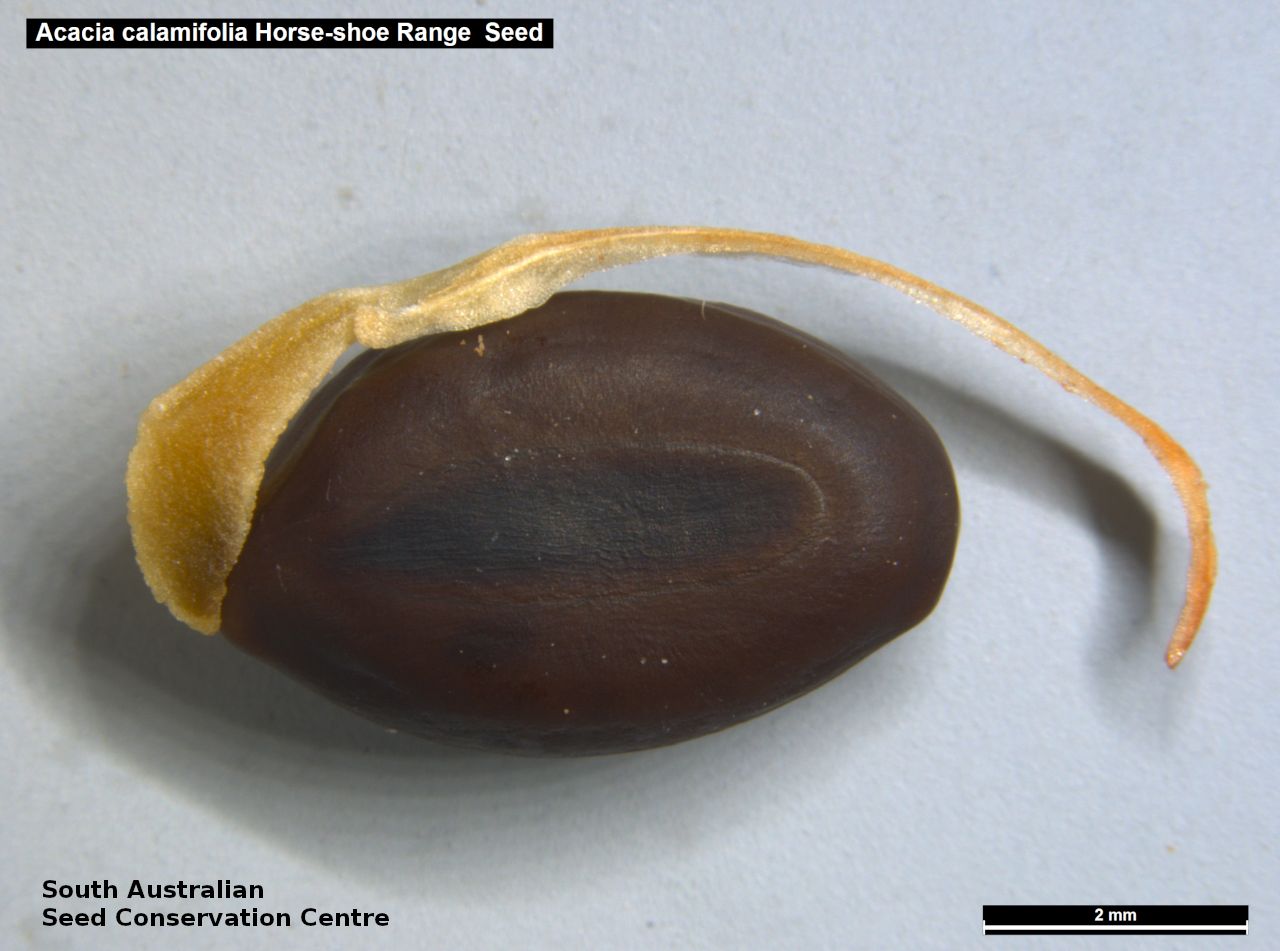
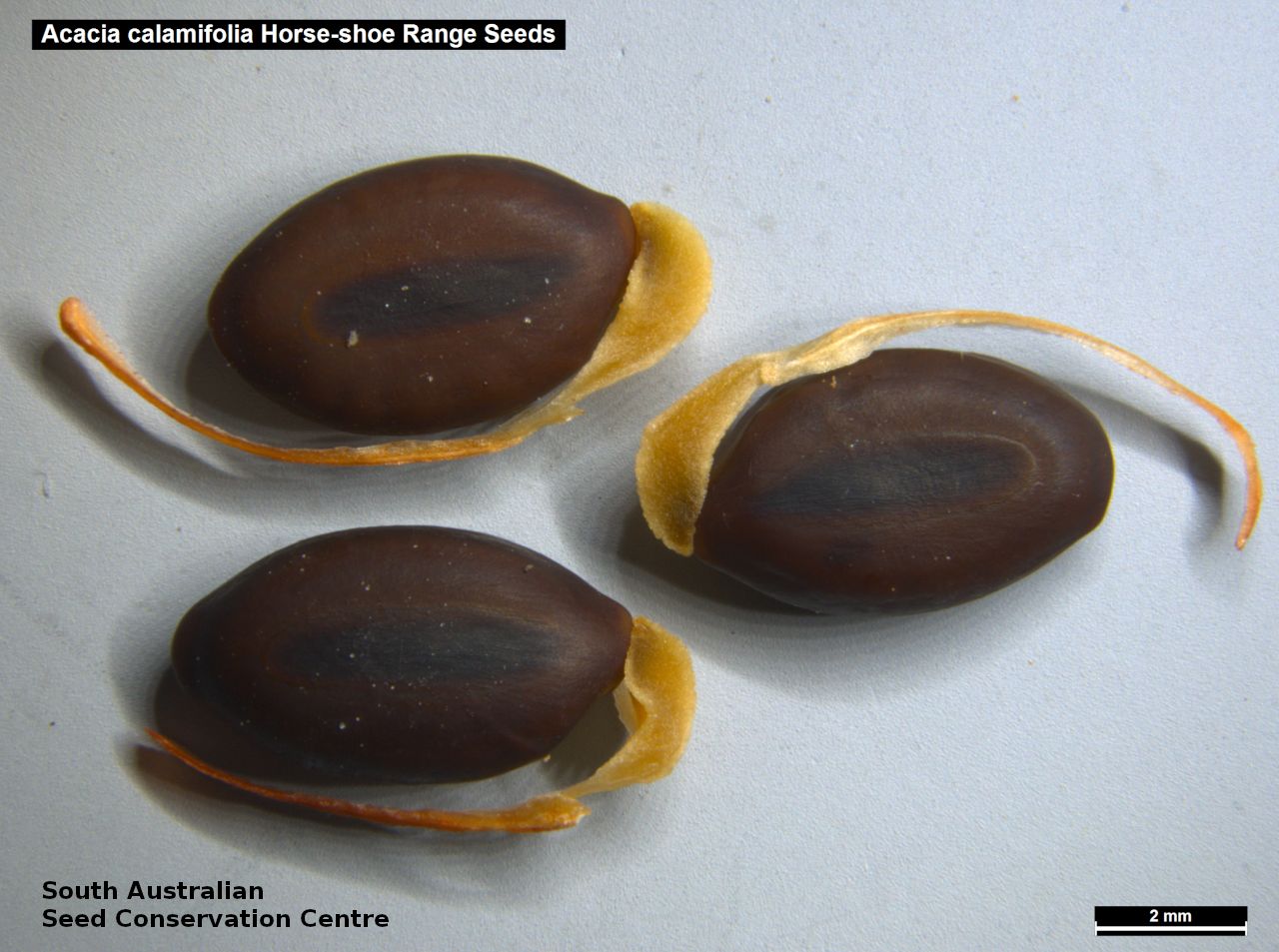

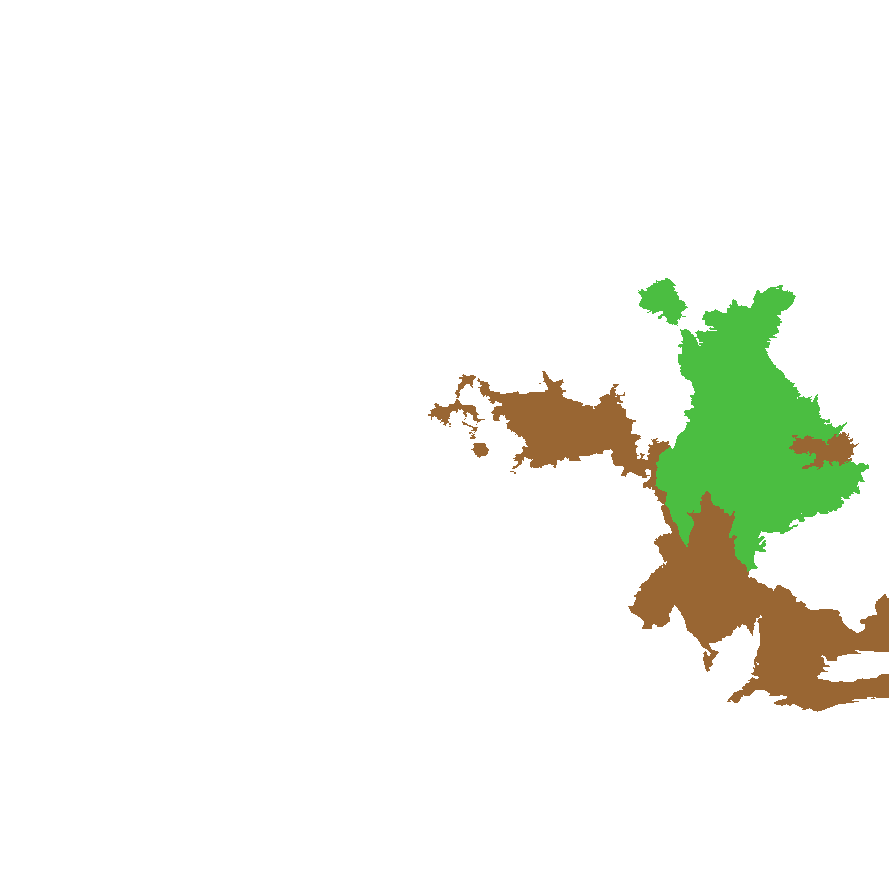
Botanical art
Prior names
Acacia microcarpa var. linearis, partly
Acacia calamifolia var. pulverulenta
Acacia pulverulenta
Common names
Reed-leaf wattle
Wallowa
Etymology
Acacia from the Greek 'akakia' and derived from 'ake' or 'akis' meaning a sharp point or thorn and 'akazo' meaning to sharpen. Dioscorides, the Greek physician and botanist used the word in the 1st century AD for the Egyptian thorn tree, Acacia arabica. Calamifolia from the Latin 'calamus' meaning a reed and 'folium' meaning leaf, referring to the species' reed-like leaves.
Distribution and status
Found in the southern part of South Australia in the Eyre Peninsula, Yorke Peninsula, Flinders Ranges, Northern and Southern Lofty, Kangaroo Island, South-Eastern, Murray and Eastern regions, mainly associated with woodland and open scrub. Also found in New South Wales and Victoria. Native. Common in South Australia. Common in the other States.
Herbarium regions: Flinders Ranges, Eastern, Eyre Peninsula, Northern Lofty, Murray
NRM regions: Adelaide and Mount Lofty Ranges, Eyre Peninsula, South Australian Arid Lands, South Australian Murray-Darling Basin
AVH map: SA distribution map (external link)
Plant description
Tall, erect, glabrous, rounded, bushy shrubs to 4 m high. Branchlets slender, ascending, reddish with smooth bark, grey on older stems. Leaves linear to 12 cm long and 5 mm wide, mainly terete-compressed but sometimes flat, straight or slightly curved, with 1 obscurely vein on each face. Small glands situated on upper margin 5-10 mm from the base of the leaves. Inflorescences axillary, solitary or 2-4 globular, yellow flower-heads. Flowering between August and November. Fruits are brown linear, straight or curved pods to 15 cm long and 6 mm wide, raised and wrinkled over the seeds. Margins straight-edged or slightly constricted. Seeds are hard black, obvoid to 6 mm long and 2.5 mm wide. Seed embryo type is investing.
Seed collection and propagation
Collect seeds between November and January. Collect mature pods that are turning brown with hard, dark seeds inside. Place the pods in a tray and leave to dry for 1-2 weeks or until the pods begin to split. Then rub the dried pods to dislodge the seeds. Use a sieve to separate any unwanted material. Store the seeds with a desiccant such as dried silica beads or dry rice, in an air tight container in a cool and dry place. Seed viability is usually high. This species has physical dormancy that needs to be overcome for the seed to germinate (e.g. nicking or softening the seed coat).
| Location | No. of seeds (weight grams) | Number of plants | Date collected | Collection number Collection location | Date stored | % Viability | Storage temperature |
|---|---|---|---|---|---|---|---|
| BGA | 3,500 (126.56 g) | 12 | 22-Nov-2005 | DJD215 Flinders Ranges | 1-Aug-2006 | 95% | -18°C |
Number of plants: This is the number of plants from which the seeds were collected.
Collection location: The Herbarium of South Australia's region name.
% Viability: Percentage of filled healthy seeds determined by a cut test or x-ray.